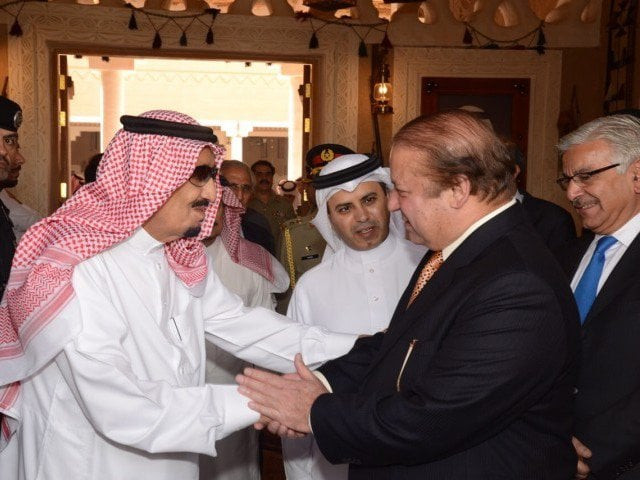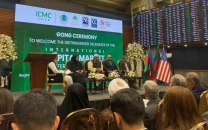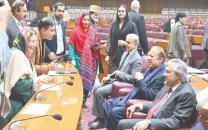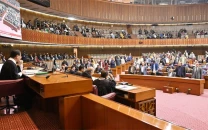A statistical look into Pakistan’s foreign friendships
US, EU regions largest partners in terms of trade

PHOTO PID
Meanwhile, the US came one step closer to finalising a deal with Iran, inching towards a resolution on ending economic sanctions on the latter. This provided an opportunity for Pakistan to revisit its trade relationship with Iran. Add to this the visit of the Chinese president, which resulted in the announcement of a $46-billion economic corridor, and Pakistan had its hands full.
In an ideal world, any country should be allowed to trade with any other. But, unfortunately, the reality is that the world is not perfect.
Pleasing the Saudis and Iran at the same time is difficult and there is also a need to balance relations between China and the US — without tilting on any one side too much.
The numbers give a clearer idea of how Pakistan trades with other countries. In other words, the numbers say a lot about the economic benefit of each relationship.
This table is based on official figures from 2012-13. The figure also excludes any deferred oil payment agreements.
The data conveys the importance of Pakistan’s relationship with the European Union and the GSP-Plus status provides potential for more gains. Despite the unpopularity of the US, it is the destination of the largest share of Pakistan’s exports (the EU share is larger but this is a sum of multiple countries’ share).
It is also the largest source of Net Foreign Investment, foreign aid (excluding the Saudi bailout and deferred oil agreements) and joint largest source of remittances.
Pakistan’s economy, particularly the export-oriented sectors, and the stock market relies on US demand, with greater net exports and investment. If we compare this to China, Pakistan imports more from them and receives lesser investments.
Obviously, gains from trade are never as simple as who the greater net-exporter is as some Chinese imports are essential intermediary goods and they also provide better prices for consumers. And a lot of US aid is in the form of military assistance.
Nevertheless, in aligning with China or the US, we have to look beyond the fallout of the Afghan war and our ‘friendship’ with China, a weakening trade relationship with the US and a fall in investment may prove more costly then with China.
However, the recently announced $46-billion investment in the Pakistan-China Economic Corridor could be a game changer for the future as it may offset any fallout from a weaker relationship with the US. However, short-term situation makes the US appear more important.
Saudi Arabia and the UAE do not compare to the likes of US and China in terms of trade and investment, but together they make up the largest share of Pakistan’s remittances, a key source of foreign exchange.
Moreover, official figures do not do justice to the importance of Pakistan’s relationship with Saudi Arabia as they exclude the March 2014 grant of $1.5 billion as well as several deferred oil payment agreements.
This relationship may not be as important as others in terms of Pakistan’s long-term growth and development but it is absolutely critical in keeping Pakistan afloat in the shorter run, making the decision of intervening in Yemen more difficult.
Neighbouring potential
The trade numbers do not look great for Iran and India despite these countries being geographically closest to Pakistan and here lays an opportunity. Bilateral trade between Pakistan and India was reported to be $2.3 billion in 2013 but the total potential has been estimated to be $19.8 billion, nearly 10 times as much.
Similarly, trade with Iran has been limited due to US sanctions and Saudi pressure. It has fallen by 81% between 2009 and 2014. Improving trade with India may hurt some protected industries but it will result in consumer welfare through cheaper prices and gains for Pakistani exporters.

Whether we like it or not, we need the US for trade and investment and we need Saudi Arabia as well. This might mean bowing to their demands in the short term but in exchange for this Pakistan should try to negotiate a better deal for the future.
Despite negativity over the energy crisis, corruption and security concerns, there are still reasons to be positive. With oil prices at a record low, Pakistan’s balance of payments situation is easing and the investment from China could in the long run reduce Pakistan’s dependency on the US and Saudi Arabia and in turn provide more autonomy over foreign policy.
THE WRITER IS A LONDON SCHOOL OF ECONOMICS GRADUATE AND IS CURRENTLY WORKING AS A BANKER IN THE UK
Published in The Express Tribune, May 4th, 2015.
Like Business on Facebook, follow @TribuneBiz on Twitter to stay informed and join in the conversation.


















COMMENTS
Comments are moderated and generally will be posted if they are on-topic and not abusive.
For more information, please see our Comments FAQ